 Mongolian traditional male clothes aren’t very diverse. Many garments look rather alike for a foreigner, but locals differentiate them all right. Let’s find a difference between two popular Mongolian coats: a terleg and a deel. Meanwhile, we’ll get to know and understand these nomadic people better.
Mongolian traditional male clothes aren’t very diverse. Many garments look rather alike for a foreigner, but locals differentiate them all right. Let’s find a difference between two popular Mongolian coats: a terleg and a deel. Meanwhile, we’ll get to know and understand these nomadic people better.
Coat called “terleg”, “terlig”, or “terlik”
If you think about the Mongolian clothing, something plain and solid is going to be a terleg. This is a light coat worn in summer or under the deel. Though, the fabric is sturdy and tough.
Historically, Mongolians are nomadic people. They spent a lot of time hunting, fighting with enemies, and breeding the cattle. Today, their lifestyle is less bloody, but they still follow a nomadic way of life. The conquerors and warriors need something comfy, reliable, and durable to wear. The terleg suits perfectly for these purposes.
As we’ve mentioned earlier, the terleg is a garment which is covered with a deel on top. That’s why it is simple, doesn’t have any decorations, and the fastener is plain and hidden (situated below the right armpit and on the shoulder).
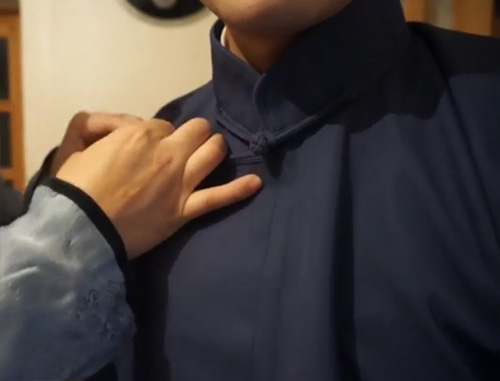
The color of the terleg is also plain and dark or grayish because it serves another purpose – to merge with the surroundings. This is especially useful for a hunter or warrior. The terleg doesn’t have bright elements on it that could give out your location. The colors used for a terleg are blue, green, gray, etc. Also, compared to the deel, the terleg doesn’t have a colorful edge.
Mongolians often use Japanese obi belt (a long fabric sash) with a terleg. They just wound it around the waist several times and tuck the end under the belt. This way, the belt is compact.
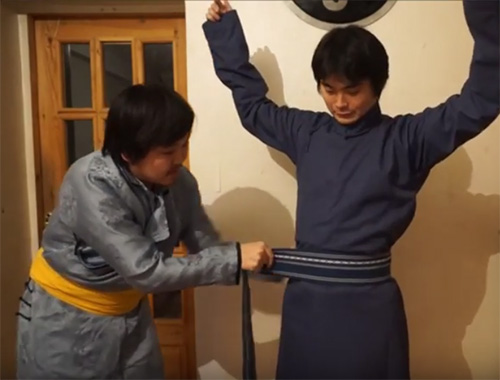
The sleeves of the terleg are very long. The length of the sleeves shows that the person is rich – it’s one of the traditional indicators. Another reason is more practical: if the weather is cold, you can cover your hands with the sleeve and grab the edges into your palm, so not even an inch of your skin is exposed. The extra length of the sleeves is used instead of mittens (and you’ll never lose or forget such mittens!).
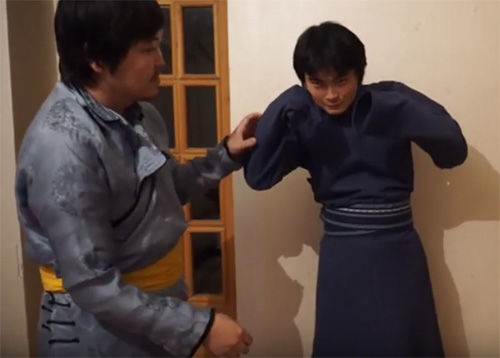
Coat called “deel”
The deel is another very popular coat. The festive deel can be very ornate, expensive, and beautiful. It is made from cotton, wool, silk, or brocade. There are summer and winter deels. Summer deels are lighter and less warm, the insides of winter deels are often covered with sheepskin or goatskin. Traditionally, the color of the coat is blue, burgundy, or olive but today any color is fine. The coat for everyday usage is usually dark-colored (brown, gray, black, etc.).
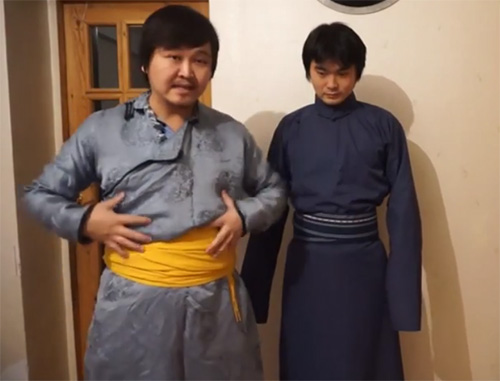
Man on the left is wearing a deel, and man on the right – a terleg
The deel has a specific cut that distinguishes it from other coats used around the world. It is usually calf-length or ankle-length. It has long sleeves. But the most peculiar part of the garment is its front. While ordinary coats are buttoned together in the middle, the deel has two wide flaps: the right flap is kept close to the chest with the left one covering. So, the fasteners are situated not in the middle of the chest but below the right armpit, on the right shoulder, and on the neck. Usually, there are 5-6 buttons. One more interesting feature of a deel: the area between the flaps and above the belt is used as a large pocket. People carry different useful knickknacks in such pockets.
The sleeves of the deel are interesting. They are wide and cup-shaped; locals lovingly call them “hooves”. There is a legend that such sleeves were invented for Mongolians to have something in common with their horses (remember about the nomadic lifestyle which makes horses the most valued and important thing in Mongolian possession).
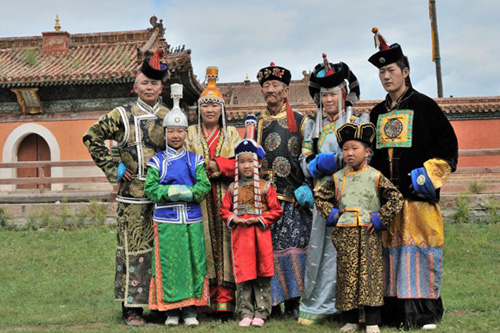
Mongolian people in the traditional deels. Photo from Mongolia-trips.com
To make the conclusion, the terleg is a garment designed to be as simple and plain as possible. As it is often used as an undercoat, its main purposes are to fit to the body, to warm up the owner, and to be obscure. Opposed to it, the deel is an outer garment. It is designed to look ornate and festive. Also, winter deels are supposed to protect the owner from harsh weather conditions.


